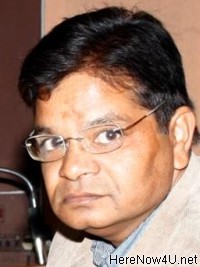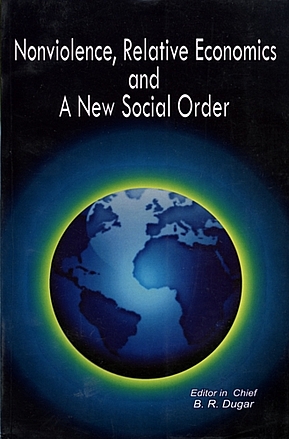Every revolution has as its objective, a change of the existing conditions, a revolution of basic values followed by an attempt to establish new ways and new standards. The anarchist revolutionary prince Kropotkin says that the essential ingredients of any revolution are "the current of ideas about the new social order contemplated," and "the current of action" be bring such an order into existence. These two currents are a must for any revolution. Gandhi's own efforts at social reform followed this pattern. In fact, it is true even of religious reformation or for that matter any social change.
Gandhi himself has said that he was basically a social reformer and that he was drawn into politics by accident and necessity. In view of the conditions existing then, it was impossible to divide social reform from politics. In fact Gandhi was of the opinion that even obtaining of freedom for India was a social reform in as much as slavery and subjugation by a foreign power were incomparable with perception of the value of the individual and ideal of equality of man and of human rights.
Any revolution, therefore, if it has to be successful, should necessarily begin by awakening social conscience. Gandhi applied himself first to the removal of social ills - such as untouchability, economic exploitation and communal disharmony. But it should not be forgotten that Gandhi had one distinct advantage. After centuries of foreign rule, Gandhi appeared on the scene as a harbinger of hope for the future - conditions were singularly favourable for social changes. The two objectives, obtaining freedom and social change, were complimentary to each other. There was a sense of urgency and the process of social reformation was hastened. Since Gandhi had been successful in showing that social change and India's freedom were links in the same chain, remarkable results were obtained, and non-violence proved effective.But can we today apply non-violence as a means for social reform when no such compelling objective (such as obtaining freedom for India then) exists? I should not be mistaken for an advocate of violence. What I mean is that the imperative need of the day is awakening of social conscience.
This is the basic reason why India in the post-independence era has witnessed so much violence and there is a feeling of dissatisfaction everywhere. We have lapsed into a state of complacency - a state of dangerous inertia and inactivity. At no time was need for social reformation more urgent and imperative than it is today. We have come to a stage when we are opposed by the very forces which played a significant role in the pre-independence era. While communal harmony was considered very necessary then, today we find that a militant section of our people go to the extent of saying that India should become a theocracy and throw out members of the minority communities. Harijans, they say, have progressed sufficiently not to be classified as backward classes any more. Land reforms according to them will prove a panacea to all ills. Such myopic views are dangerous and detrimental to the interests of our nation. Without communal harmony, there can be no real progress. Communal riots and conflicts will nullify the efforts of constructive nation building activities. As far as the Harijans are concerned, even today instances of their being ill-treated, subordinated and subjugated are not lacking. Exploitation of the tiller by the owner of the land still persists in more fearful and subtle ways.
To me, therefore, it appears that the only change that has occurred is that we are independent politically. The social evils that were existing before independence are still with us in more pronounced harmful forms and are symptomatic of our diseased minds. It is for us, to prove ways of preventing the disaster which stares us in the face.
 Dr. Bachh Raj Dugar
Dr. Bachh Raj Dugar
 Husain Eajaz
Husain Eajaz

